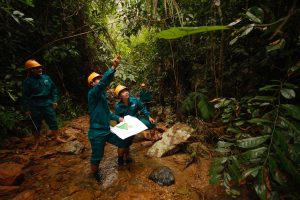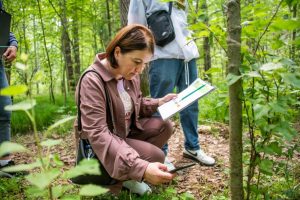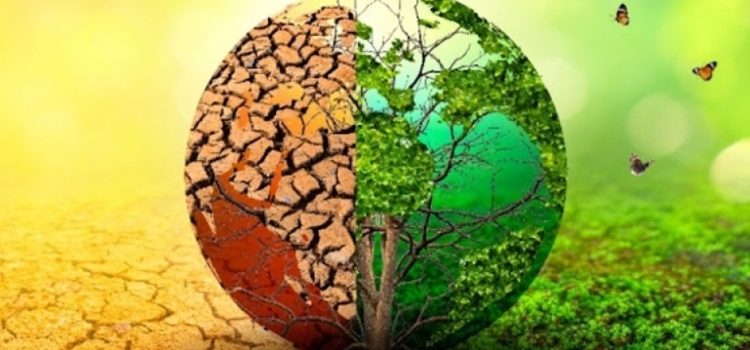
Climate change is an undeniable global phenomenon that has far-reaching implications for the planet’s ecosystems. As temperatures rise, weather patterns shift, and sea levels increase, the delicate balance of biodiversity is profoundly affected. Biodiversity, the variety of life in all its forms and interactions, is critical for ecosystem health, human well-being, and the stability of the Earth’s environment. This article explores the intricate relationship between climate change and biodiversity, emphasizing the urgency for comprehensive action to mitigate these impacts.
Understanding Climate Change

Climate change refers to long-term changes in temperature, precipitation, and other atmospheric conditions on Earth. While natural processes have historically driven climate variability, human activities, particularly the burning of fossil fuels, deforestation, and industrial processes, have accelerated these changes. Greenhouse gases like carbon dioxide (CO2) and methane (CH4) trap heat in the atmosphere, leading to global warming.
Effects on Biodiversity
- Habitat Loss and Fragmentation: One of the most immediate impacts of climate change on biodiversity is habitat loss. As temperatures rise, many species find their habitats becoming unsuitable for survival. For instance, polar bears rely on sea ice for hunting and breeding, but with the ice melting at unprecedented rates, their populations are dwindling. Additionally, climate change can fragment habitats, making it difficult for species to migrate to more suitable environments.
- Altered Ecosystems: Climate change can disrupt the intricate balance of ecosystems. Changes in temperature and precipitation patterns can alter the availability of resources such as water and food, leading to shifts in species composition. For example, coral reefs, which are highly sensitive to temperature changes, experience bleaching when water temperatures rise. This not only affects the corals themselves but also the myriad of species that depend on them for shelter and food.
- Phenological Changes: Phenology, the study of cyclic and seasonal natural phenomena, is also affected by climate change. Many species rely on specific environmental cues for activities such as migration, breeding, and flowering. As climate change alters these cues, species may find themselves out of sync with their environment. For instance, birds that migrate based on temperature cues may arrive at their breeding grounds before or after the optimal time, affecting their reproductive success.
- Species Extinction: The most severe consequence of climate change on biodiversity is species extinction. As habitats become inhospitable and ecosystems are disrupted, many species are unable to adapt quickly enough to survive. The International Union for Conservation of Nature (IUCN) estimates that climate change threatens approximately 20-30% of species with extinction if global temperatures rise by more than 1.5-2°C above pre-industrial levels.
- Ocean Acidification: Increased CO2 levels not only contribute to global warming but also lead to ocean acidification. The oceans absorb about a quarter of the CO2 emitted into the atmosphere, resulting in a chemical reaction that lowers the pH of seawater. This acidification can have detrimental effects on marine life, particularly organisms with calcium carbonate structures such as shellfish and corals. Disruptions in these populations can ripple through the marine food web, affecting a wide range of species.
Human Dependence on Biodiversity

Biodiversity is not just crucial for the health of ecosystems but also for human survival and well-being. We rely on biodiversity for essential services such as food, medicine, and clean water. For instance, many of the crops we depend on for food are pollinated by insects, which are facing declines due to climate change and other factors. Additionally, many medicinal compounds are derived from plants and animals, making the conservation of biodiversity critical for healthcare.
Mitigation and Adaptation Strategies
Addressing the impact of climate change on biodiversity requires a multifaceted approach that includes both mitigation and adaptation strategies.
- Mitigation: Reducing greenhouse gas emissions is paramount in slowing the rate of climate change. This can be achieved through transitioning to renewable energy sources, enhancing energy efficiency, and promoting sustainable land use practices. Reforestation and afforestation efforts can also help sequester CO2 from the atmosphere.
- Protected Areas: Establishing and expanding protected areas can provide refuges for species affected by climate change. These areas can serve as biodiversity hotspots where ecosystems are preserved and species are given a chance to adapt.
- Habitat Restoration: Restoring degraded habitats can enhance their resilience to climate change. This includes activities such as replanting native vegetation, removing invasive species, and restoring natural water flows in wetlands and rivers.
- Climate-Smart Conservation: Conservation strategies need to incorporate climate change projections to be effective. This means considering future climate scenarios when planning conservation actions and creating corridors that allow species to migrate in response to changing conditions.
- Community Engagement: Engaging local communities in conservation efforts is crucial. Indigenous and local knowledge can provide valuable insights into sustainable practices and help build resilience against climate change impacts.
- Policy and Legislation: Strong policies and legislation at local, national, and international levels are necessary to protect biodiversity. This includes enforcing existing environmental laws, creating new regulations to address emerging threats, and participating in international agreements such as the Paris Agreement.
Conclusion
The impact of climate change on biodiversity is profound and multifaceted, affecting ecosystems, species, and human well-being. As the planet continues to warm, the urgency for action becomes ever more critical. Mitigation efforts to reduce greenhouse gas emissions, coupled with adaptive strategies to protect and restore habitats, are essential in preserving the rich tapestry of life on Earth. By understanding and addressing the interconnectedness of climate change and biodiversity, we can work towards a more sustainable and resilient future for all species, including our own.










